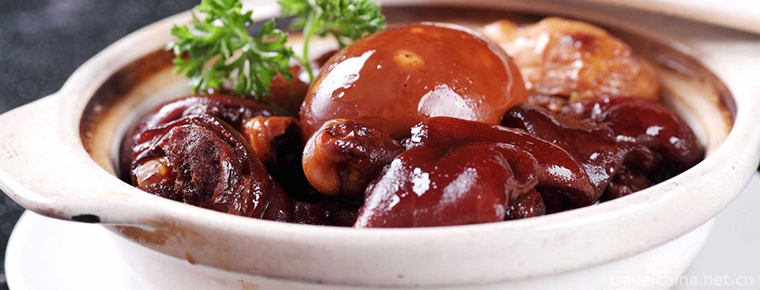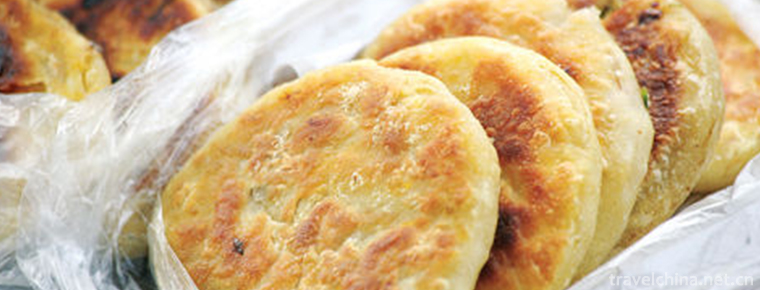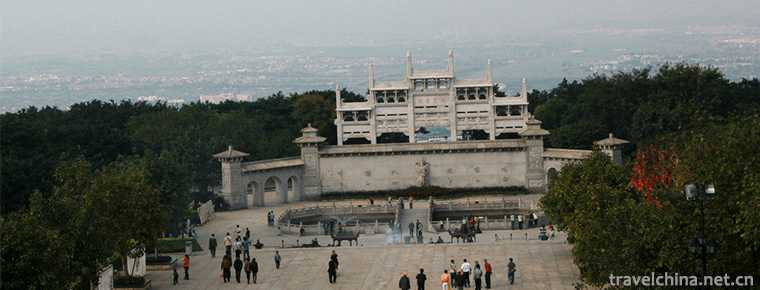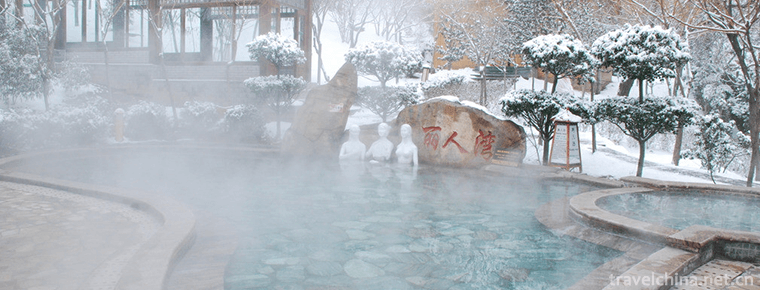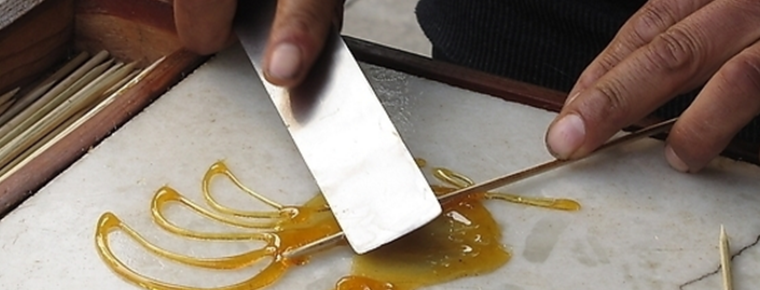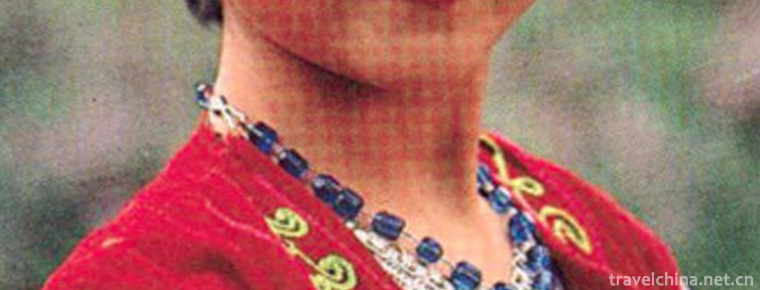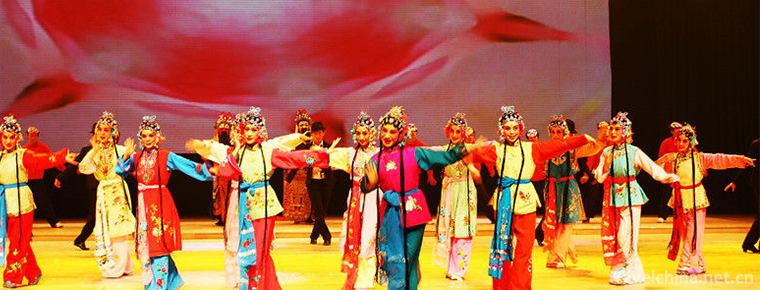Production Techniques of Pu er Tea
Production Techniques of Pu er Tea
Pu'er tea production technology, also known as tribute tea production technology, has been formed through thousands of years of practice. The basic procedures are as follows: sacrificing the God of tea, selecting raw materials, killing green, kneading and drying, autoclaving and shaping, etc. to make all kinds of finished tea. The traditional craft of Pu'er Tea Tribute Tea has strong historical and cultural connotation and unique production technology, strong folklore, unique technology and rich and ornamental products. It plays an important role in promoting the formation of Pu'er Tea brand technology and the development of tea industry. It is also a traditional cultural treasure in the treasure house of Chinese and even world tea culture.
In 2008, Pu'er Tea Production Techniques (Tribute Tea Production Techniques) were included in the second batch of national intangible cultural heritage list.
Skills History
On June 7, 2008, the State Council issued a document (Guofa 19) approving the second batch of national intangible cultural heritage list determined by the Ministry of Culture. The "Dayi Making Skills" is listed as the only intangible cultural heritage project directly named by the brand of the production enterprise in the tea industry of China. The serial number is 934 and the serial number is_-151.
China is an ancient civilization with a long history and rich and colorful cultural heritage. Intangible cultural heritage is an important part of cultural heritage, is the witness of our history and an important carrier of Chinese culture, contains the unique spiritual value, mode of thinking, imagination and cultural awareness of the Chinese nation, reflects the vitality and creativity of the Chinese nation. Protecting and making good use of intangible cultural heritage is of great and far-reaching significance for inheriting and carrying forward national excellent cultural traditions, promoting national unity and maintaining national unity, enhancing national self-confidence and cohesion, and promoting the construction of socialist spiritual civilization. Therefore, the Chinese government carries out the protection of intangible cultural heritage from the national level.
"Dayi Tea Making Techniques" has been listed in the national intangible cultural heritage list. It is not only the national recognition of the excellent technology and technology created, inherited and accumulated by Menghai Tea Factory for decades, but also the recognition of the unique professional tea making ability of Dayi. It is also the recognition of the central position of Menghai Tea Factory and beneficial brand in the origin and development of modern Pu'er Tea.
"Dayi Tea Making Techniques" has been successfully selected into the second batch of national intangible cultural heritage list. It is reported that Dayi Tea Production Technology is the only intangible cultural heritage project named directly by the brand of the production enterprise among the tea representatives selected for the intangible cultural heritage. This honor has once again written a brilliant stroke for the development history of Yunnan Pu'er Tea.
. Qingyin refers to brewing without any supplements, which is more common in the Han nationality. Mixed drinking refers to adding any supplements you like in tea, which is more common in Hong Kong and Taiwan. For example, Hong Kong likes adding chrysanthemum, Chinese wolfberry and American ginseng to Pu'er tea. Anti-foaming is one of the advantages of Pu'er Tea. The old Pu'er Tea can be brewed more than 20 times with a cover bowl or purple sand pot. The taste and color of the soup will gradually decrease with the increase of the number of times.
Traditional famous tea
The "Dayi" brand Pu'er tea produced by Menghai Tea Factory in Yunnan Province is a traditional famous tea in Yunnan Province. As the top product of Pu'er tea, its Dayi Qizi cake tea (7572, 7542, 7262, 7592, 8582, 8592, 7672, 7562, etc.), Menghaituo tea, Pu'ertuo tea, Pu'er brick tea, Daughter Gong tea, Palace Pu'er tea, etc., has been respected as the representative of classic Pu Pu'er tea in the industry for decades, and has become the treasure of Pu tea collected by numerous tea people.
This Dayi tea production technology has been listed in the national intangible cultural heritage list. It not only embodies the excellent technology and research wisdom accumulated by Menghai Tea Factory for decades, but also represents the strong brand commitment and quality assurance of Yiyi Pu'er Tea to consumers as a classic of Yun Tea.
Nowadays, Yunnan Menghai Tea Factory is more focused on the scientific research and development of modern Pu'er Tea, striving to continue to create more Yunnan Pu'er classics, and devote itself to the pursuit of higher quality of life of natural health for consumers .
Manufacturing Technology
The harvested tea cyanine was withered, killed, twisted and dried to make dried cyanine wool tea. At this time, all raw Pu'er tea raw materials, tea merchants, tea farmers'associations according to customer needs and autoclaved molding, large, small, all kinds of shapes, raw and ripe. However, the raw Pu'er tea is steamed directly after grading, and gradually becomes more fragrant in anticipation, that is, the natural way to release the raw Pu'er tea. The ripe Pu'er tea is then sprinkled, stacked, dried and screened to make Pu'er loose tea (ripe Pu'er wool is finished) waiting for autoclaved forming .
Tea-picking cyanine. Tea picking in Pu'er Tea follows the tradition of picking tea in that year, that is, singing the song of picking tea when picking tea, picking five to six hearts slowly with one heart and two leaves, then putting them into the tea bag basket, the tea will not be damaged, and the tea quality will be better when it withers and kills the cyanine.
Withered. Tea picking process is quite exquisite, the tea cyanine in the hand will be too much and hurt, resulting in squeezing phenomenon; too much tea cyanine in the tea bag and poor ventilation, resulting in upper and lower phase pressure leading to a slight ripening; furthermore, the tea cyanine in the tea garden should not be harvested for too long, should be removed as soon as possible withered. Tea cyanine withering is to use sunshine or heat to volatilize the bitterness and astringency of newly harvested tea leaves, so that the tea softens and dehydrates, of course, it is not suitable for excessive withering. Therefore, the quality of tea products, withering process is very important. The free Pu'er tea is selected and picked artificially, which ensures the quality of tea.
Cyanine killing. Pu'er tea belongs to green tea before compaction, so its cyanide killing process is indispensable. The main purpose of cyanide killing is to stop the fermentation of tea; most of the cyanide killing methods are pot-type cyanide killing (the old method is manual stir-frying), because the tea cyanine will lose water after withering, but not yet thorough, the use of cyanide killing method can make the tea lose water evenly.
Knead and twist. Rolling needs to be adjusted according to the degree of tenderness of tea cyanine raw materials. The purpose is to make the tea sheets rolled into strips or beads. The young leaves are lighter and the old leaves are heavier. At this time, the volume of cyanine has been reduced by more than half after cyanide killing and twisting.
Dry in the sun. The twisted tea cyanine is spread out in the sunshine, and the water content of the tea is about 10%. When there is no sunshine, the tea can be dried by drying, but the tea dried by sunshine has its special fragrance. This is one of the important reasons for the special taste of early Pu'er tea, and the principle of "drying but not drying" is adopted.
Yunnan only produces sun-dried green tea until 1938, steamed green tea in 1945 and tea kneading machine in 1964. At this time, Yunnan large-leaved baked green tea began to be produced. It can be inferred that since 1964, under the full acceptance of the impact of modern civilization and the baptism of new tea-making technology, the traditional sun-dried green tea has had another way of thinking. Because the traditional method has not been fried and dried at high temperature, its activity has not completely disappeared. In the process of autoclaving or storage, it can continue to ferment and oxidize, and the taste is strong and lasting. Unlike ordinary green tea, which has been stir-fried and dried at high temperature, although it is sweet and delicious, it will deteriorate in a short time if it is not properly preserved. The traditional method of sun-dried green tea is not only still used by many minority nationalities in southern Yunnan, but also has diversified taste of sun-dried green wool tea. The method of micro-fermentation in the process of sun-dried green tea is also the pioneer of modern sprinkler-drier process of Pu'er tea
Seven Key Points of Pu'er Tea Production Technology
Because Yunnan has high altitude in the north and low altitude in the south, and the temperature is low in the north and high in the south, the temperature in the north and south is inversely proportional to the altitude; the sunshine rainfall is less in the north and more in the south, and the temperature in the South and north is proportional to the sunshine rainfall in the north and south. It is because of this geographical environment that the soup quality of Pu'er tea is bitter in the north and astringent in the south. If the northern part of Lincang is bitter, the southern part of Lincang is more astringent.
In addition to the above geographical and environmental factors, there is also a major factor is the problem of technology, instructor technology. Technological problems are as follows:
1. Picking time, of course, Pu'er before May is better than autumn tea, autumn tea is often bitter.
2. Wilting and finishing, many people do not understand this, that is, in the ventilation area, just picked tea leaves are evenly spread out in the dustpan, so that tea moisture evaporates naturally, tea leaves will become soft. If the water evaporates insufficiently, the tea soup will be bitter and persistent, but if the water evaporates too long, the tea will not be able to soak, and the tea soup is thin.
3. Green-killing treatment: Most small factories have green-killing machines, and most farmers also use large iron pots, if good tea has good teachers, the traditional practice is better. Well, once the master masters the temperature too high, the tea soup will bring some acid, if the master temperature is too low, the tea soup will have green taste.
4. Twisting process: This is a clever chemical reaction (hereby declare that no chemical elements are added). Like our Southern people's way of kneading pickles, I say the way, oh, it's not the way. Ha-ha, pickles should be added salt, and tea needn't be used. Oh, this one is also mechanized. It's available in the market. If the quality of the soup is not thin enough by manual rolling, excessive rolling of the soup is cloudy and bitter and astringent. I drink Pu'er the most critical. Personal factors, personal preferences, do not bleed.
5. Drying treatment of wool tea: If high-temperature drying will have slightly acidic water thin, but insufficient drying, tea soup will turn red and bitter, this process is also the key factor of bitterness.
6. Steaming treatment: Steamed tea is poured into triangular bags. Some are pressed by machines and some by stone. I like to use stone to grind beautiful tea. If the autoclaving time is too long and the temperature is too high, the strips of tea cyanine are not obvious, on the contrary, the tea cake is loose and difficult to form.
7. Drying treatment of finished products: if the tea is dry at high temperature, the tea is thin, but the fragrance is obvious, it will mildew if it is not dried well; if the sun shines directly, the tea cake is red on the surface, the soup is a little red, and the soup is thin. It is recommended to dry in a special ventilated shade or under the eaves on sunny days. .

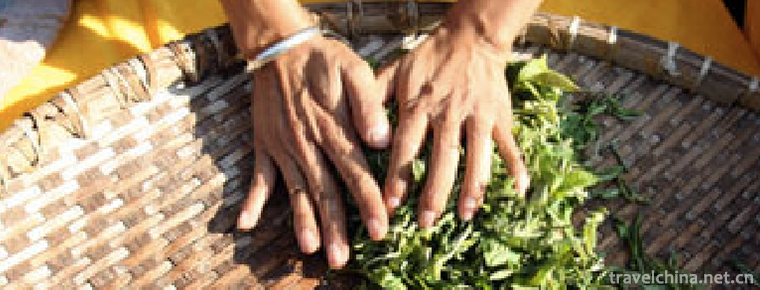
-
Jiang Cudan Canton style pig leg
Except for those with internal fever, dry stool and weak spleen and stomach function, breast enlargement products can be used as a warm-up tonic in winter..
Views: 233 Time 2018-11-02 -
Huizhou cake
Huizhou cake, originally named "jujube mud crisp baked bread", is a traditional feature in Huizhou area, Anhui Province. .
Views: 223 Time 2018-11-27 -
Xiqiao Mountain Scenic Area
Xiqiao Mountain Scenic Spot is located in the southwest of Nanhai District, Foshan City, Guangdong Province, China. It has 72 peaks, forming numerous waterscapes, 232 springs and 28 waterfalls..
Views: 145 Time 2018-12-12 -
White Deer hot spring bailu hot spring
Bailu Hot Spring is a hot spring resort center built according to the national AAAA scenic standard. Located in Wentang Town, Pingshan County, Shijiazhuang City, Hebei Province, Bailu Hot Spring is a .
Views: 136 Time 2019-01-02 -
Weihai Tianmu Hot Spring Resort
Tianmu Hot Spring Resort Project invested 600 million yuan by Zhuhai Tianmu Group. A total of 35,000 square meters were opened in September 2008..
Views: 80 Time 2019-02-22 -
Traditional skills
Chinese traditional folk art is a craft inherited from Chinese folk, such as paper-cut is one of the most popular traditional folk decorative arts in China, with a long history.
Views: 316 Time 2019-04-19 -
Kazakh Costume
Kazakh people are characterized by pastoral nomadic culture. Their clothes are easy to ride. Their national clothes are mostly made of sheep's skin, fox's skin, deer's skin and wolf's skin, reflecting.
Views: 213 Time 2019-05-02 -
Western Fujian drama
Western Fujian Han Opera, formerly known as "Waijiang Opera", also known as "Ran Tan", is one of the local operas in Fujian. He was born out of foreign operas, absorbed Hakka diale.
Views: 204 Time 2019-06-05 -
Beijing Film Academy
Beijing Film Academy is a University of art with film history and profound film culture. Its predecessor is the Institute of Performing Arts founded in 1950. It was relocated in 1951 and renamed as th.
Views: 159 Time 2019-09-06 -
University Of Science and Technology Beijing
Beijing University of Science and Technology was established in 1952 by the Department of Mining and Metallurgy of 6 famous universities in China, such as Tianjin University (formerly Beiyang Universi.
Views: 180 Time 2019-09-06 -
Suining climate
Suining City is located in the Asian monsoon area, belonging to the subtropical humid monsoon climate in Sichuan Basin. It has a mild climate, abundant rainfall, four distinct seasons and a significant monsoon climate. The frost free period is long in winter and spring..
Views: 354 Time 2020-12-16 -
History and culture of Yibin
Yibin has 34 world-class, national and provincial scenic spots and 58 national and provincial key cultural relics protection units. Among them, there are seven cave cliff tombs (Eastern Han Dynasty), Jiuzhou tower (Song Dynasty), Daguanlou (Qing Dynasty), etc..
Views: 377 Time 2020-12-18
